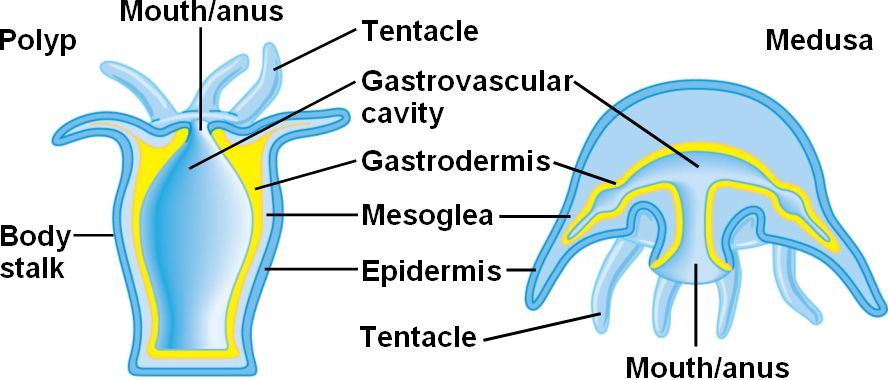Phyla Cnidaria
Cnidarians have radial or biradial symmetry around a mouth as illustrated in the picture above. They have no head or segmentation of any kind. Cnidarians have an external epidermis and an inner gastrodermis. The mouth of a cnidaria is surrounded by soft tentacles connected to a digestive system that resembles a sac. This cavity may branch out or be divided by a septa. A cnidaria has no circulatory, excretory, or respiratory organs. They have no central nervous system as well, but they do have a diffuse network of unpolarized nerve cells. These nerve cells are located in the body wall. Cnidocyte cells contain nematocysts. This is for stinging and paralyzing prey.There are mainly 2 forms cnidarians can take.
Polyp and Medusa
Cnidarians are classified into 4 classes;
Hydrozoa
Scyphozoa

Cubozoa
Anthozoa
Cniadrians commonly reproduce sexually. They use budding when in the polyp stage and reproduction gametes in the medusa stage.
Examples of cnidaria are sea anemones, corals, hydras and their relatives, as well as jellyfish.
Cite
pictures:
Info:





No comments:
Post a Comment